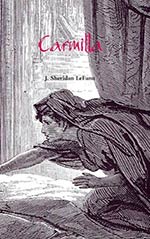
![]() Naomi_uk72
Naomi_uk72
5/11/2015
![]()
First published in 1872, Carmilla is one of the earliest surviving examples of vampire fiction and is arguably one of the most influential. Written a quarter of a century before Bram Stoker's Dracula, this short novel introduces a number of tropes and ideas that would eventually become a staple of modern vampire fiction.
Told in the first person, the story introduces us to Laura, the young daughter of a wealthy English widower living out his retirement in the Austrian province of Styria. Laura and her father soon find themselves taking care of another young girl, the Carmilla of the title, and before long it becomes apparent that there is something a little strange about their guest. In particular, the relationship between Laura and Carmilla becomes intimate, almost to the point of the two becoming lovers, though this is never directly acknowledged in part perhaps due to the morals of the time at which the story was written. At the same time an illness begins to affect the local area, with many of the victims dying from the unexplained plague. It is only after the arrival of an old friend of the family that the truth of Carmilla's vampiric nature is revealed, and with a little help from a learned hunter of vampires they finally track down the antagonist's tomb and put an end to her undead existence.
While it's easy for modern readers to dismiss this story as all-too-familiar, it has to be remembered that when Carmilla was first introduced to the reading public it would have been an entirely new experience for many of its audience. This earlier novel influenced much of Stoker's classic, and in the female antagonist we have what is arguably the origin of every female and lesbian vampire found in the genre since. I'd certainly consider this to be required reading for anyone wanting to explore the origins of modern vampire fiction.